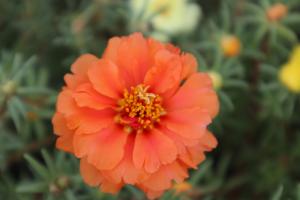How to Plant Cotton Tree Seeds
Cotton trees, also known as kapok trees, produce a soft, fluffy fiber that is commonly used to fill pillows, mattresses, and stuffed toys. These trees are native to tropical regions of South America, Africa, and Asia. If you are interested in growing your own cotton trees, whether for their valuable fiber or simply for their ornamental value, here are some tips on how to plant cotton tree seeds.
Choose High-Quality Seeds
The first step to successful cotton tree cultivation is to start with high-quality seeds. While cotton trees can be grown from cuttings or suckers, planting seeds is the most common method. When selecting seeds, look for ones that are fresh, clean, and disease-free. If possible, choose seeds that are native to your area or similar climate zones, as they will be more likely to thrive in your local conditions.
Prepare the Soil
Cotton tree seeds need well-draining soil that is rich in organic matter. Before planting, prepare the soil by removing any weeds, rocks, or debris. If your soil is heavy or clay-based, consider mixing in organic material such as compost or peat moss to improve drainage and fertility. Cotton trees also prefer slightly acidic soil with a pH level between 6.0 and 6.5.
Plant the Seeds
Once you have high-quality seeds and prepared the soil, it's time to plant. Begin by digging a hole that is about twice as wide and deep as the seed. Gently place the seed in the hole and cover with soil, patting it down to ensure good contact with the seed. Water the soil thoroughly to help settle it and encourage germination.
Care for your Cotton Trees
After planting, it is important to care for your cotton trees properly to ensure their health and growth. Here are some tips:
Watering: While cotton trees are relatively drought-tolerant, they need consistent moisture to thrive. Water regularly, especially during dry spells. Avoid over-watering, as this can lead to root rot.
Fertilizing: Cotton trees benefit from regular feeding with a balanced, slow-release fertilizer. Apply according to package instructions, usually every 6-8 weeks during the growing season.
Pruning: Cotton trees do not require pruning, but it can be helpful to selectively remove damaged or diseased branches. Prune in late winter or early spring before new growth begins.
Pest and Disease Control: Cotton trees may be susceptible to pest and disease problems such as scale insects or fungal diseases. Keep an eye out for any signs of trouble and treat promptly with appropriate remedies.
Harvesting Cotton Fiber
If you planted your cotton trees for their fiber, you can harvest the soft, fluffy cotton around the seeds when the pods mature and begin to split. Gently remove the cotton from the seeds and allow it to dry before using it for stuffing or other purposes.
Conclusion
Planting cotton tree seeds is a rewarding and enjoyable activity that can yield both aesthetic and practical benefits. With the right care and attention, your cotton trees can flourish and provide you with a valuable crop of high-quality fiber. Follow these tips for successful cotton tree cultivation.

 how many times do yo...
how many times do yo... how many planted tre...
how many planted tre... how many pine trees ...
how many pine trees ... how many pecan trees...
how many pecan trees... how many plants comp...
how many plants comp... how many plants can ...
how many plants can ... how many plants and ...
how many plants and ... how many pepper plan...
how many pepper plan...































